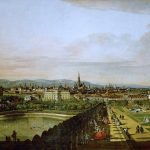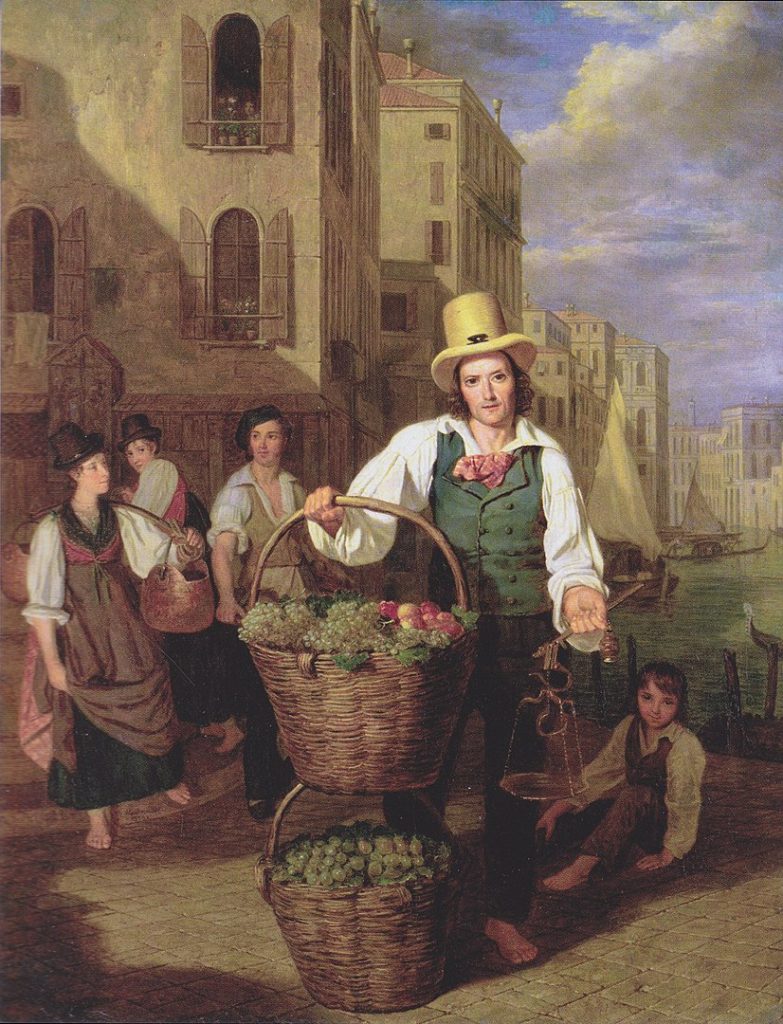
Ferdinand Georg Waldmüller was born on January 15, 1793, in Vienna, Austria, into a modest family. Despite financial challenges, his early interest in art was evident, inspiring him to pursue formal education. In 1807, he enrolled at the Academy of Fine Arts in Vienna, where he studied under Johann Baptist Lampi, a prominent portrait artist known for his refined technique. Waldmüller’s studies focused on portraiture, a foundational skill that would later contribute to his mastery of realism. Though early years were financially unstable, they allowed him to refine his attention to detail and practice a variety of artistic techniques, including portrait miniatures. These years of foundational training laid the groundwork for Waldmüller’s unique ability to capture fine details, expressions, and naturalistic elements in his later works.
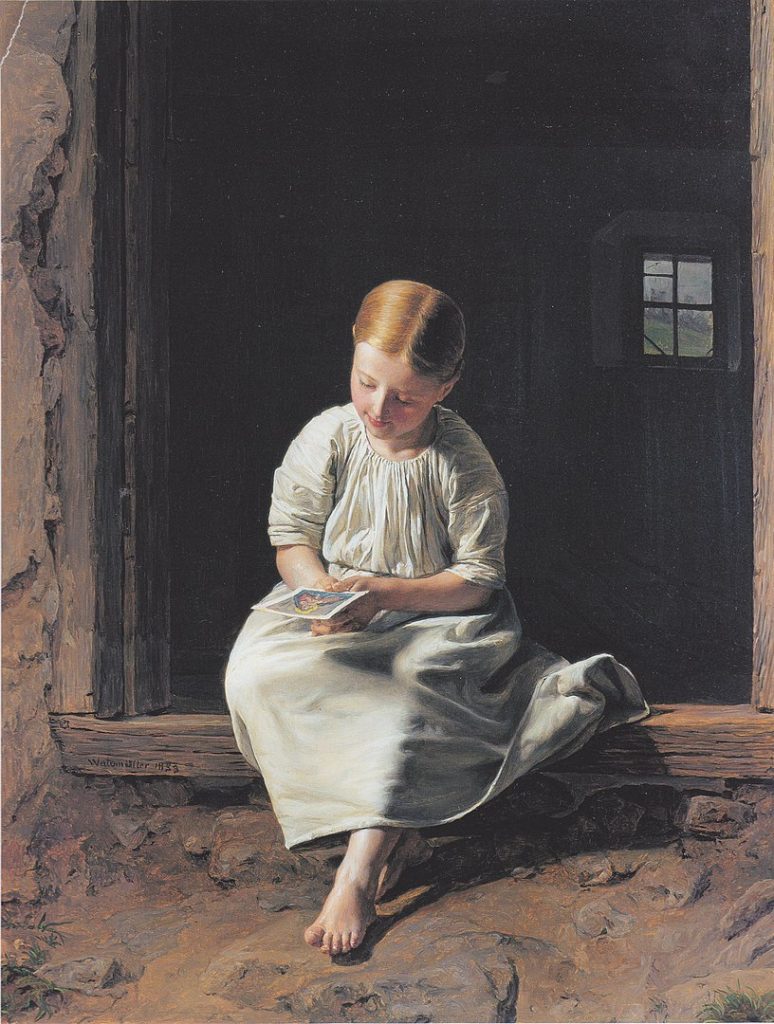
During this time, Waldmüller supported himself by taking on various commissions. His work spanned from painting portraits for local families to creating miniature works that were popular among the Viennese elite. These portrait miniatures not only provided a stable income but also enabled him to develop a meticulous style that valued precision and realism. This practice helped establish his reputation within Vienna, setting him on a path toward becoming one of Austria’s notable artists.
Transition from Portraiture to Realism
By the 1820s, Waldmüller began a stylistic shift, moving from commissioned portraits toward scenes inspired by everyday life and nature. Influenced by the realism emerging in European art, he moved away from the idealized forms typical in Austrian painting at the time, focusing instead on accurate, lifelike representations. This change marked a significant turning point in his career, as he began to concentrate on landscapes and genre scenes depicting rural life. Inspired by the beauty and simplicity of nature, he aimed to portray these scenes with a level of accuracy and detail that had rarely been seen before in Austrian art. His focus on natural light, seasonal change, and the textures of the countryside gave his work a freshness and authenticity that quickly garnered attention.
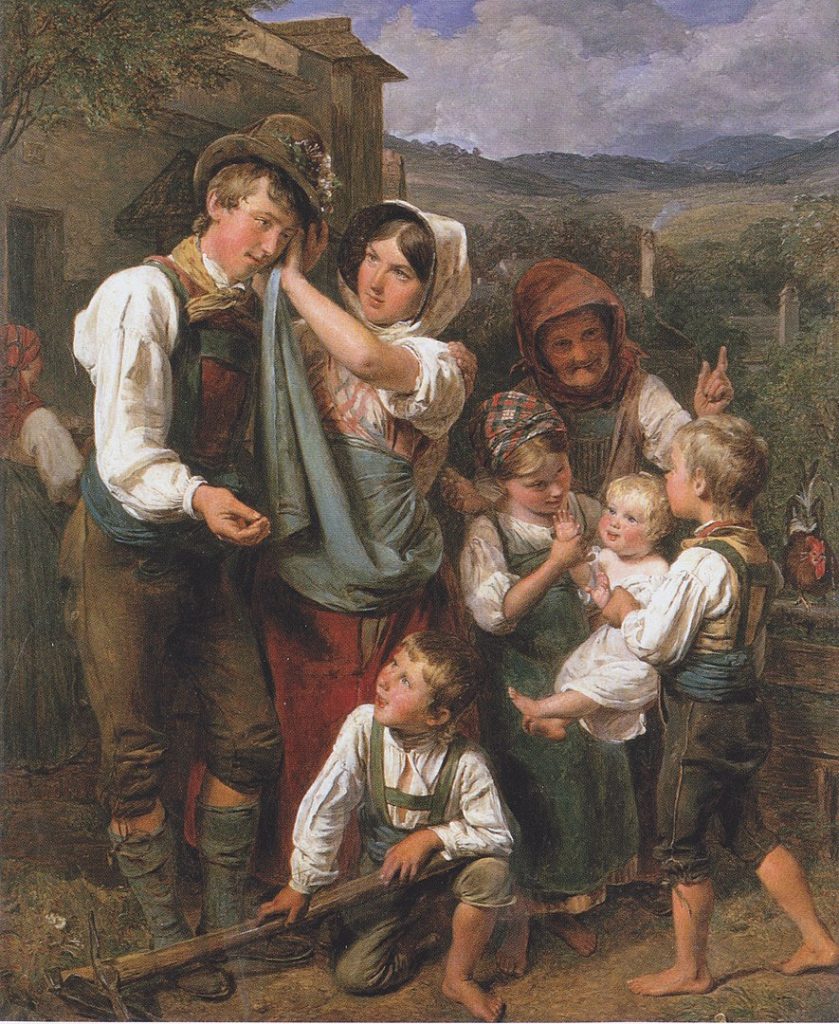
Waldmüller’s shift toward realism came at a time when many European artists were challenging romanticized depictions in favor of more truthful representations. His works like The Entry of Emperor Franz I into Vienna and The Eavesdropper reflected his interest in capturing unembellished moments from daily life, standing in contrast to the dramatic, often theatrical themes that were popular at the time. This phase of his career set him apart as a pioneer in Austrian realism, and his commitment to this style would influence countless artists who came after him.
Rise to Prominence in Vienna
Waldmüller’s unique approach soon earned him widespread acclaim in Vienna, where art lovers and critics recognized the emotional depth and realism of his work. By the 1830s, he was a well-established artist known for his lifelike depictions of landscapes and genre scenes. His works, such as The Family Prayer (1846), showed the lives of ordinary Austrian citizens in a way that emphasized authenticity and empathy, bringing the rural Austrian experience to the forefront of his country’s artistic landscape. As his reputation grew, he was appointed a professor at the Academy of Fine Arts in Vienna in 1829. This role allowed him to formally influence the next generation of artists, spreading his realist ideals within the academic setting.
At the Academy, Waldmüller emphasized an approach to art that valued observation, realism, and the study of light, rather than adherence to the classical, idealized forms promoted by the Academy’s conservative teachings. His students were encouraged to study their subjects closely, portraying them with honesty and precision. Waldmüller’s teaching style was revolutionary for its time, as he promoted a break from tradition and an embrace of realistic representation. His popularity continued to grow as his works were widely exhibited, capturing the attention of art collectors and the general public alike.
Conflict with the Art Academy
Despite his success, Waldmüller’s career at the Academy was marked by ongoing conflict. He openly criticized the Academy’s conservative approach to art education, arguing that its rigid standards and bureaucratic practices stifled artistic innovation. He believed that students should be encouraged to paint real life, capturing both its beauty and its imperfections, rather than adhering to outdated ideals. Waldmüller’s outspoken nature led to disputes with the Academy’s administration, culminating in his eventual dismissal from his teaching position in the 1850s.
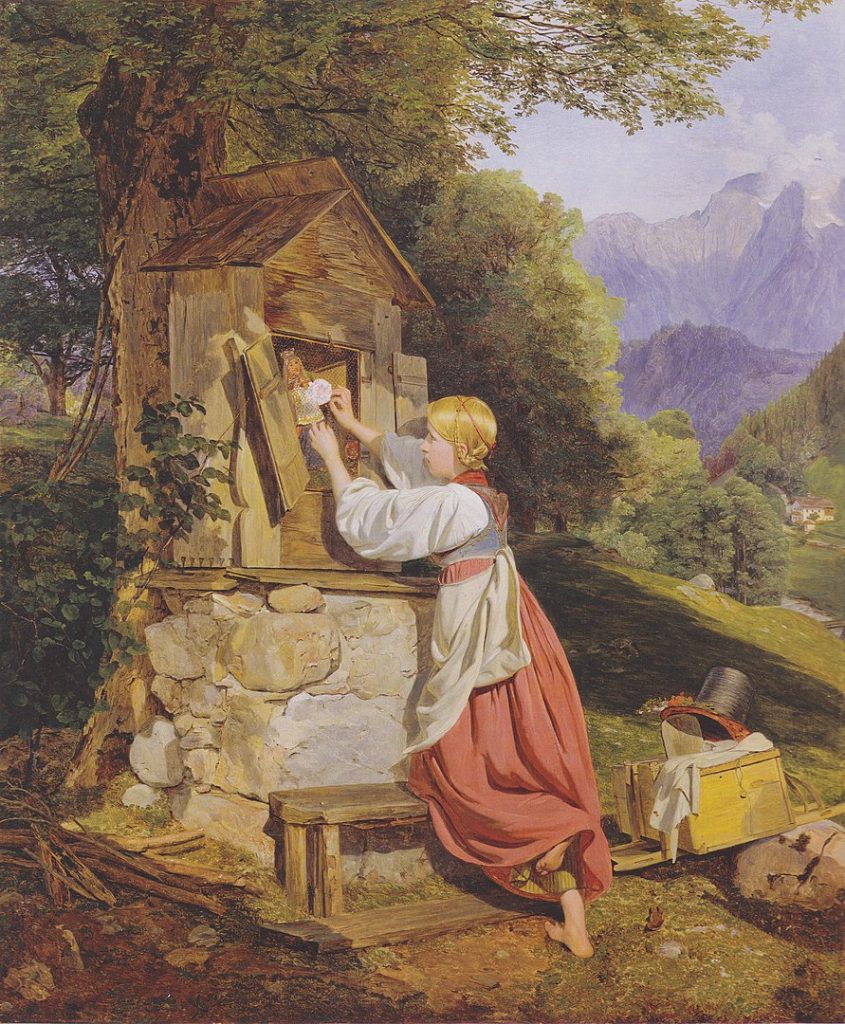
While this professional setback was challenging, it also allowed Waldmüller greater freedom to pursue his artistic vision outside the constraints of the institution. This period of independence gave him the opportunity to focus on landscapes and rural scenes without compromise, as he sought to perfect his use of light and color in natural settings. Though he faced challenges, Waldmüller’s departure from the Academy marked a period of creative exploration that further solidified his unique artistic style.
Artistic Style and Techniques
Waldmüller’s art is celebrated for its realism, particularly his mastery of light and detail. He believed that light was essential to capturing nature’s true beauty, a belief that influenced his choice of subjects and techniques. His landscapes often depicted scenes from the Austrian countryside, with a focus on seasonal changes, natural light, and the interactions between people and their surroundings. His paintings such as Early Spring in the Vienna Woods (1861) showcase his meticulous attention to detail and his sensitivity to light, which became defining elements of his style.
Waldmüller developed a technique that involved studying his subjects at different times of the day to capture the nuanced effects of changing light. His careful attention to atmospheric conditions allowed him to portray the subtle interplay of sunlight and shadow, creating depth and vibrancy in his works. This approach distinguished him from his contemporaries, as he brought an unprecedented level of realism to Austrian landscape painting. His works are recognized for their ability to convey the mood and character of a scene through the careful use of color, texture, and light.
Later Years and Key Works
In his later years, Waldmüller continued to produce works that reflected the beauty and tranquility of rural Austria. His focus on landscapes intensified as he painted scenes of the countryside with an increasingly refined color palette. Works such as The Expected One (1860) capture the charm and simplicity of rural life, depicting ordinary moments with empathy and attention to detail. These paintings show his continued dedication to portraying life with honesty, capturing the spirit of Austria’s rural communities in a way that resonated with viewers.
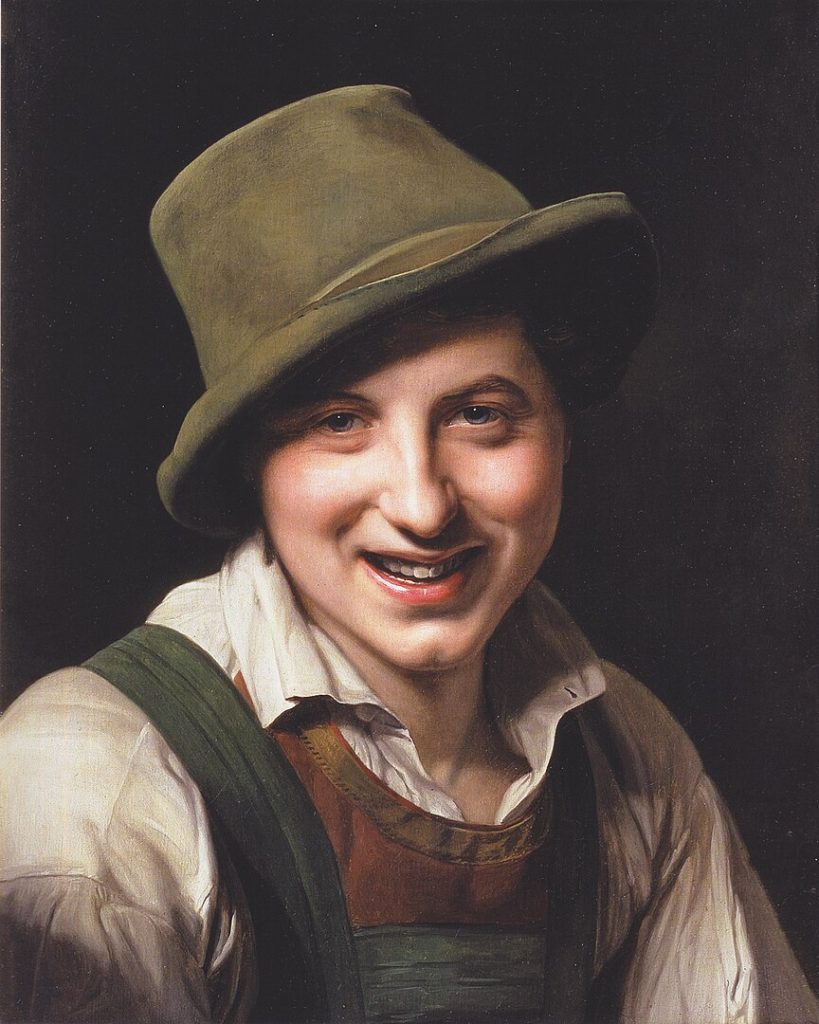
During this period, Waldmüller also revisited some of his earlier themes, using his developed techniques to add depth and vibrancy to his compositions. His later works are often praised for their subtlety and warmth, as well as their ability to evoke an emotional response. Waldmüller’s commitment to realism and his skillful use of light made his art timeless, and his works continued to be in high demand until his death.
Legacy and Lasting Influence
Waldmüller’s impact on Austrian art extended well beyond his lifetime, as his work influenced generations of artists and helped establish realism as a respected genre. By the time of his death on August 23, 1865, in Hinterbrühl, Austria, Waldmüller had created a lasting legacy, with a body of work that spanned over five decades and included hundreds of paintings. His dedication to realism, along with his innovative techniques, set a new standard in Austrian art. Many of his works are preserved in major institutions, such as the Belvedere Museum and Kunsthistorisches Museum in Vienna, where they continue to be appreciated by art lovers and scholars alike.
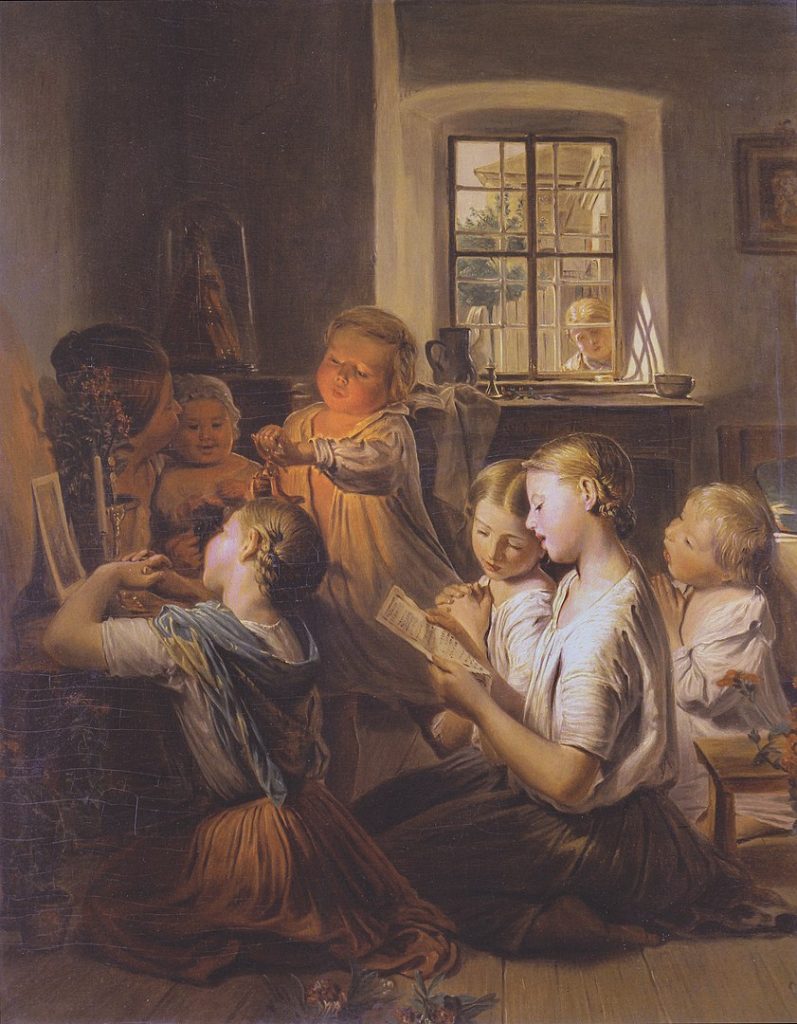
Waldmüller’s approach to realism and his focus on portraying life with honesty made him a pioneer in Austrian art. His influence can be seen in the works of later artists who sought to capture the natural world with similar precision and sensitivity. His contributions to art are still recognized today, and he is celebrated as one of Austria’s most significant 19th-century painters.
Recognition in Modern Art History
Today, Waldmüller is celebrated as a master of realism and an important figure in European art history. His works continue to attract attention from historians and art enthusiasts, who admire his ability to blend technical skill with emotional depth. As a figure in Austrian cultural heritage, Waldmüller’s paintings offer valuable insight into 19th-century life, capturing both the natural beauty and social dynamics of his time. His contributions remain a point of reference for those studying realism and the development of art in Austria.
Final Thoughts
Ferdinand Georg Waldmüller’s life and work remain a cornerstone of Austrian art history. His dedication to realism, combined with his innovative use of light and detail, established him as one of the 19th century’s leading artists. Despite professional challenges, his legacy endures through his timeless landscapes and genre scenes, which continue to inspire viewers with their warmth and authenticity. Waldmüller’s pioneering approach to realism left an indelible mark on Austrian painting, ensuring his place in art history.
Key Takeaways
- Waldmüller was a pioneer of realism in Austrian painting, emphasizing natural light and detail.
- He studied at the Academy of Fine Arts in Vienna, excelling in portraiture before focusing on realism.
- His work is celebrated for its detailed depiction of rural life and landscapes.
- Conflicts with the Academy led to his dismissal, but also enabled greater artistic freedom.
- Waldmüller’s influence is evident in the works of later Austrian artists, and his art is preserved in major museums.
FAQs
Who was Ferdinand Georg Waldmüller?
An Austrian artist known for his realistic landscapes and genre scenes, he was a pioneer of 19th-century realism.
What style did Waldmüller popularize?
Waldmüller popularized realism, with a focus on natural landscapes and rural life.
Why did Waldmüller leave the Academy of Fine Arts?
He was dismissed due to disagreements with the Academy’s conservative approach, which he felt limited artistic expression.
Where can Waldmüller’s works be found today?
His works are in several major institutions, including the Belvedere Museum and Kunsthistorisches Museum in Vienna.
How did Waldmüller influence Austrian art?
He inspired a generation of artists to focus on realistic depictions, particularly of rural Austrian life.


